Are you planning to install outdoor tiles? In this article, we will guide you through the process, whether you’re a DIY enthusiast or hiring a professional. You’ll learn everything you need to know to achieve beautiful, long-lasting results.
Outdoor porcelain tiles have become increasingly popular in recent years due to their aesthetic appeal and durability. They combine the natural beauty of materials with the strength of tiles to create an elegant and functional addition to any garden.
However, it is crucial to install porcelain slabs correctly using appropriate fixing materials. In this guide, we will explain the essential steps involved in installing outdoor tiles, as well as provide helpful tips for cutting and grouting. Additionally, we will provide advice on how to maintain your new outdoor space in pristine condition.
Please note that when we mention outdoor tiles, we are referring to porcelain pavers that are specifically designed for outdoor use and are 18 to 20 mm thick. We are not talking about normal porcelain tiles unless mentioned explicitly.
Is it possible for me to install outdoor tiles on my own?
We often get asked about the feasibility of tiling as a DIY project. The answer to this question is not straightforward, as it varies based on several factors such as the surface you are tiling onto, your previous DIY experience, and the tools you have at your disposal.
For instance, if you are planning to lay a few tiles directly onto grass, you can take on this project yourself, especially if there is no requirement for tile cutting. However, if you have a large patio that you want to tile in your dream family home, it is advisable to hire professionals. They have the necessary skills and experience, and you can rest assured that the finish will meet or exceed your expectations.
Can outdoor tiles be installed on any surface?
Thanks to their durable nature, outdoor tiles can be installed onto various substrates using different methods. The installation method to choose depends on your garden and your preferences. While some methods can be permanent, others can be temporary and allow for easy removal of the tiles if you wish to update or move homes. In this article, we will explore the four most popular methods of installation and provide our recommended guidelines for each.
Hardcore Base
Based on our experience, the most common method to install outdoor tiles, particularly in the UK, involves excavating the area for your new patio, filling it with crushed hardcore, and then setting the tiles onto a bed of mortar, which is a mixture of sand and cement.
One of the advantages of this approach is that the tiles are securely fixed in place, resulting in a stunning and long-lasting finish for your garden.
Concrete Base
If you’re planning to extend your home or move to a new-build property, it’s likely that your new terrace will have a solid concrete base. In such a scenario, you can use outdoor tiles and install them using porcelain tile adhesives, just like indoor floor tiles. Using adhesives is easier than using mortar, and once the tiles are fixed in place, they will remain so permanently.
Grass or Gravel
Porcelain pavers are a great alternative to traditional tiles as they don’t crack if not fully supported underneath. They can be dry-laid onto grass, gravel, or soil, making them ideal for stepping stones across lawns and backyards. This method doesn’t require any ‘wet’ installation materials and is easy to install. Once you’ve prepared the area, you can simply drop the tiles into place, making it a quick and straightforward DIY option.
Raised Pedestals
An innovative solution for laying outdoor tiles is by using plastic pedestals that are specifically designed for this purpose. This eliminates the need for grout or adhesive and is a popular choice for commercial terraces, balconies, and rooftops. Additionally, any wires or pipes can be concealed in the cavity underneath the tiles. The installation process is simple, as the pedestals are set in place before laying the tiles. Furthermore, the tiles can be easily replaced when necessary.
What are the tools needed to install outdoor tiles?
Regardless of the method you choose, the following tools are necessary. Additional tools may also be required based on your chosen installation method.
- The outdoor tiles themselves
- Measuring tape
- Soft brush
- String line
- Spirit level
- LTP Porcelain Tile Protector
- Shovel
- Gloves, kneepads and safety goggles
- Sponge or wash boy system
- Wet tile cutter
- Rubber mallet
Installing outdoor tiles onto hardcore
This method involves digging out the area for your new patio, filling it with compacted hardcore, and then laying your outdoor tiles using a bed or screed of sand and cement.
What you’ll need:
In addition to the equipment listed above, you will also need a cement mixer, MOT1 hardcore, sharp sand, cement, a whacker plate, spacers, grout or jointing compound, and priming slurry.
How to install:
Before starting the installation, mark out and excavate the area. Dig out at least 150mm below the intended height of your finished floor. This will allow for a 100mm level of crushed MOT1, 30mm of mortar, and the thickness of the tiles, which is 20mm.
Fill the area with a level of MOT1 and then rake it out. Compact it using the whacker plate until it’s even. Repeat the process in layers until you have a solid hardcore base that’s at least 100mm deep.
Make sure that your base slopes away from any nearby buildings. We recommend a minimum fall of 25mm every 1.5 metres in length. Use the string line to mark out the required gradient.
To prepare the mortar bed, mix six parts of sand to one part of our ProPave Mortar. You can do this by hand, but a cement mixer is much easier! Add water until you reach a firm consistency. Avoid having a mixture that is runny, as it won’t support the weight of the slabs. Generally, a ball of mortar the size of an orange should hold its shape without falling apart. Note that you can also use cement instead of our ProPave Mortar.
Apply a layer of mortar over the compressed MOT1. We recommend a minimum height of 30mm. Use the edge of the spade to roughen the surface of the mortar up in preparation for the tiles.
Mix our ProPave Slurry Primer with water to a smooth consistency. Apply a thin layer to the reverse of each tile using a small paint roller. This primer will help the non-porous slabs bond to the mortar bed and is vital to a lasting installation. If missed, tiles can de-bond very quickly. Wipe up any primer that gets onto the front of the tiles as it’s very difficult to remove once set.
Slowly lower the first primed slab onto the mortar bed. The best place to start is usually in a corner. Tap the slab down using the rubber mallet until it’s at the desired height. Use the spirit level to ensure you have an adequate fall if required.
Once the first tile is in place, place the next tiles and work your way out. Use spacers to ensure an even gap between the slabs. Make sure the tiles follow the required fall. Clean up any mortar as you go, using a damp sponge.
After laying all the tiles, wait for at least 48 hours before grouting, as we will discuss in detail below.
How To install outdoor tiles on a concrete base?
Although fresh concrete slabs can be costly and require time to install, they provide a highly stable base. This ensures that there is minimal chance of the tiles shifting over time. Just like the hardcore option, it is important to ensure that the slab has a proper fall design and, if it is freshly poured, it should be given enough time to cure completely before tiles are laid on it.
What you will need:
In addition to the equipment listed above, you will also need high-quality porcelain tile adhesive, a notched trowel, spacers, and grout or jointing compound.
How to install:
To ensure that your tile installation is successful, it is important to prepare your concrete slab beforehand.
Firstly, make sure that the surface is perfectly flat and free from any dirt or debris. If necessary, apply a coat of tile primer to seal the surface.
Next, mix the tile adhesive with water, following the instructions provided by the manufacturer. Use a notched trowel to apply the adhesive to the concrete slab, combing it out as you go.
Before fitting each tile into place, spread a thin layer of adhesive on the reverse side of the tile. This is known as ‘back-buttering’ and it helps to ensure a strong bond between the tiles and the concrete slab.
Starting from a corner, gently lower the first tile into place and tap it with a rubber mallet until it reaches the required height. Check the fall of the tile using a spirit level.
Once the first tile is in place, continue to work outwards, laying one tile at a time. Use spacers to maintain a consistent joint between each tile.
Finally, wipe away any excess adhesive using a damp sponge. By following these steps, you can ensure that your tile installation is successful and long-lasting.
Once all the tiles have been laid, allow time for the adhesive to set before grouting.
Installing outdoor tiles onto grass or gravel
If you’re planning to install outdoor tiles on grass or gravel, there are a few things you should keep in mind. Proper preparation is key to ensuring a successful installation.
If you want to add a touch of style to your garden or lay outdoor tiles yourself, the method described below is very popular. It’s a quick process that doesn’t require any specialized tools or materials. Additionally, it looks great, as evidenced by the image below.
While you can lay tiles directly on top of your grass or gravel, it’s our opinion that you’ll achieve a better finish if the top surface of your tiles is level with the surrounding area. This will also ensure that your lawnmower’s blades won’t catch the tiles while cutting the lawn, potentially causing damage.
How to install:
To lay tiles, start by placing them in their final positions and mark them around them using a spade. It’s best to keep at least 50mm of space between each tile to allow for proper installation.
Next, move the slab and dig out the grass and soil to a depth of 80mm. Be careful not to remove too much of the surrounding lawn.
Fill the hole with fine gravel and compact it down until the gravel layer is a maximum of 60mm deep.
Now, carefully lay the tile onto the gravel, and tap gently with the mallet, until it’s flat and stable.
When installing slabs using this method, grout or jointing compound is not required. Instead, the grass or gravel forms a porous joint that allows rainwater to drain away.
Installing outdoor tiles onto pedestals
Pedestal installation of outdoor tiles is becoming increasingly popular. It has multiple benefits, such as being easy to install without any mess, allowing you to hide pipes and cables underneath the tiles, and making it easy to remove them in case you plan to move.
How to install:
Before starting the tiling process, ensure that the subfloor is stable and has a slight slope. This will help water to flow towards the drain. You’ll need a pedestal in each corner of the tile, and one in the middle to distribute the weight evenly. Begin by laying the pedestals and tiles in a corner. The tiles should be flat and level. The design of the pedestals ensures a small and consistent joint between the tiles. The tiles will butt up to spacer lugs on top of each pedestal. If needed, you can adjust the height of the pedestals using the provided tool or spanner.
After the pedestals and tiles have been laid, the job is complete. There is usually no mess and since the tiles are not grouted, you can start using your new space right away. Keep in mind that rainwater is meant to go through the gaps of the tiles, so ensure that the surface below is waterproof and has a sufficient slope where necessary.
How to cut outdoor paving slabs
Outdoor tiles are twice as thick as indoor porcelain tiles and are extremely durable. However, they cannot be easily cut using traditional tile cutters or angle grinders. Instead, you will need to use specialized tools designed specifically for this task.
- A flatbed ‘wet’ tile cutter with plunge capacity
- A petrol-powered cut-off saw
It’s important to use a continuous-rim diamond blade designed specifically for cutting 20mm porcelain tiles when working with them. Porcelain paving cannot be cut with a traditional segmented blade. When cutting porcelain slabs, it’s essential to cut slowly and use fresh water to keep the diamond blade cool. This will help wash the blade and prevent dust from forming, which is crucial when cutting any material. Cutting too fast can cause slabs to crack while cutting dry can lead to chips. For your safety, always wear gloves, goggles, ear protection, and a FFP Grade 3 mask when cutting porcelain. These safety measures are non-negotiable.
Straight cuts
When you cut porcelain tiles, you need a special blade. It’s important to cut them slowly and use water to keep the blade cool and stop dust from getting in the air. If you cut too fast or don’t use water, the tiles may break or chip. When you cut, wear gloves, goggles, ear protection, and a mask to keep safe.
To cut a tile, follow these steps:
1. Use a chalk pen or pencil to mark the cut on the surface of the tile.
2. With a first pass of the blade, lightly score the tile.
3. Cut the tile in several additional passes, plunging 5-10mm each run.
4. Be careful not to overheat the blade, as this can cause chipping. Let the blade do the work.
When using a cut-off saw to cut tiles, it’s important to lay them on top of sturdy old pallets to minimize vibration. Make sure the tiles are well-supported underneath. It’s good practice to cut a couple of centimetres into each end of the tile first before joining the cuts. This helps reduce tension in the body of the tile and prevents it from cracking.
Intricate cuts
When working on a roofing project, you may encounter obstacles like gutters or gullies that you need to cut around. In some cases, a wet tile cutter may not be an option, so you’ll need to use a cut-off saw or an angle grinder instead.
To make a cut on the surface of a tile, first, mark the cut and score the lines to lessen the tension.
Then, gently glide the blade along the score lines and avoid rushing. Allow the blade to do the work. If necessary, tap the cut section softly to remove it.
You can then use the blade to trim any excess material. If you are using an angle grinder, make sure to take regular breaks to cool down the blade.
How to grout your outdoor tiles?
If you’ve used hardcore or installed your tiles on a concrete slab, then you’ll need to fill the gaps between them. This can be done using a tile grout that’s suitable for outdoor use, or a brush-in jointing compound. Besides giving your tiles a polished finish, filling the gaps helps prevent water from seeping into the ground beneath, which could cause problems later on.
Using tile grout
For slabs installed on a concrete base, we suggest using tile grout that is rated for external use. Our Grout 3000 products are designed to meet this requirement.
To ensure a perfect finish for your tiled area, follow these instructions carefully:
1. Begin by sweeping the surface of the tiles thoroughly and cleaning the joints to remove any debris or dust.
2. Next, mix the grout with water according to the manufacturer’s instructions, ensuring a smooth and consistent texture.
3. Use a rubber grout float held at a 45-degree angle to apply and push the grout into the joints, ensuring that they are completely full.
4. Once the joints are filled, wipe away any excess grout from the tiles.
5. Finally, use a damp sponge or washboy system to clean the tiles by gently wiping the surface perpendicular to the grout joints.
By following these steps, you can achieve a clean and professional finish for your tiled area.
When grouting tiles, it’s important to check the weather forecast for the next 48 hours and only proceed if dry weather is expected. Excessive moisture can cause the grout to cure incorrectly. After grouting, a fine layer of cement dust may appear on the tile surface. This is known as ‘grout haze’ and can trap dust, leading to dirty and stained tiles. To avoid this, it’s recommended to clean the tiles with LTP Grout Stain Remover once the grout has set.
Using jointing compound
If you want to fill the gaps between slabs, you can use a jointing compound that is easy to apply. It’s called ‘brush-in’ and you don’t need to mix it. To use our ProPave External Grout jointing compounds, you should know that there are two methods of applying them. This depends on whether the surface beneath the tiles lets water drain or not.
If your substrate can drain water, then you should:
Before applying the jointing compound, make sure to wet the tiles with plenty of water. Use a stiff brush to brush down the compound over the joint. It’s important to keep both the tiles and compound wet during the process. Continuously spraying water with a hose will help to compact the jointing compound as the water drains. Once the joints are full, soak the area one last time and wash away any remaining jointing compound. Finally, the compound will cure and harden as it dries out.
If your concrete substrate is impermeable, the process differs slightly.
1. Sprinkle a mist of water over the tiles. Avoid flooding the joints.
2. Pour the jointing compound over the joint.
3. Using a stiff brush, brush down the compound.
4. Use a pointing trowel and jointing iron to compress the material into the joint.
5. If needed, repeat the process until you achieve the desired level.
When you use a jointing compound, you can walk on your patio within 48 hours. However, it may take up to 28 days to fully cure. Whichever method of grouting you choose, it’s important to ensure that the grout finishes slightly below the level of the tiles. This will ensure that the tiles themselves always remain at the ‘wear’ level of your finished patio.
Sealing Outdoor Tiles
While outdoor tiles are resistant to water and do not require sealing, we strongly recommend using our Porcelain Tile Protector on outdoor tiles before grouting. The surfaces of many outdoor tiles are textured or gritty, which can easily trap excess grout or residue from brush-in compounds if they are not thoroughly cleaned immediately after installation. Using a protector will help prevent these and other stains without changing the appearance of your new patio tiles.

 Bathroom Wall Tiles
Bathroom Wall Tiles Bathroom Floor Tiles
Bathroom Floor Tiles Shower Room Tiles
Shower Room Tiles Wet Room Tiles
Wet Room Tiles Feature Wall
Feature Wall Small
Small Medium
Medium Large
Large Extra Large
Extra Large Grey
Grey White
White Green
Green Black
Black Pink
Pink Blue
Blue Beige
Beige Cream
Cream Black & White
Black & White Teal & Turquoise
Teal & Turquoise Onyx Effect
Onyx Effect Rustic Effect
Rustic Effect Natural Stone Effect
Natural Stone Effect Granite Effect
Granite Effect Terranzo Effects
Terranzo Effects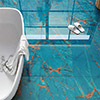 Glass Effect
Glass Effect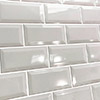 Subway Tiles
Subway Tiles Victorian Tiles
Victorian Tiles Concreate Effect
Concreate Effect Brick Effect
Brick Effect Square Tiles
Square Tiles Rectangle Tiles
Rectangle Tiles Hexagonal Tiles
Hexagonal Tiles Plank Tiles
Plank Tiles Fan Shaped Tiles
Fan Shaped Tiles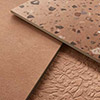 Matt
Matt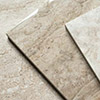 Polished/ Glose
Polished/ Glose Kitchen Wall Tiles
Kitchen Wall Tiles Kitchen Floor Tiles
Kitchen Floor Tiles Splashback Tiles
Splashback Tiles Wood Effect
Wood Effect Marble Effect
Marble Effect Outdoor Wall Tiles
Outdoor Wall Tiles Fireplace
Fireplace Garden Tiles
Garden Tiles Outdoor Floor Tiles
Outdoor Floor Tiles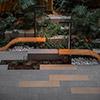 Patio Tiles
Patio Tiles Porch Tiles
Porch Tiles Hallway
Hallway Leaving room
Leaving room Balcony Tiles
Balcony Tiles Deck Tiles
Deck Tiles Outdoor Slab Tiles
Outdoor Slab Tiles Wall Cladding
Wall Cladding